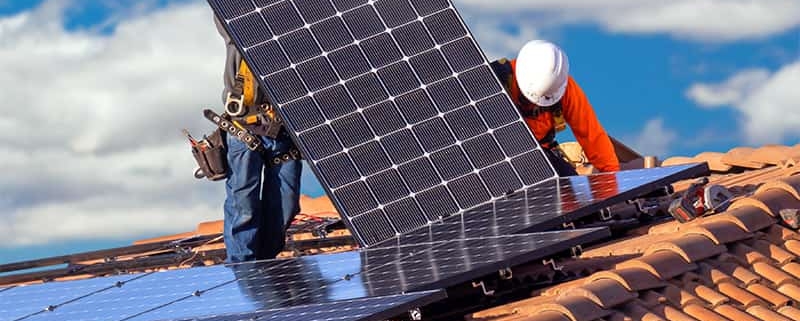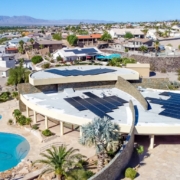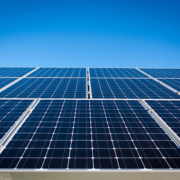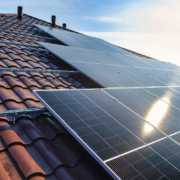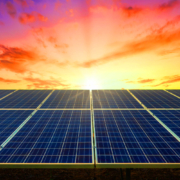Types of Solar Panels
Introduction
Solar panels are devices that convert sunlight into electricity. They work by using photovoltaic cells to absorb light and generate a flow of electrons, producing a direct current (DC) of electricity. This DC is then converted into alternating current (AC) by an inverter, making it usable for homes and businesses.
In this article, we will explore the different types of solar panels available in the market, their pros and cons, and important factors to consider when choosing the right one for your needs. You will gain insights into:
- Monocrystalline Solar Panels: Highly efficient but expensive
- Polycrystalline Solar Panels: Budget-friendly yet efficient
- Thin-Film Solar Panels: Versatile with a shorter lifespan
Understanding these distinctions will help you make an informed decision, ensuring optimal energy generation and long-term savings. Whether you prioritize efficiency, cost, or installation flexibility, this guide covers all essential aspects to help you choose the best solar panel type for your specific requirements.
1. Monocrystalline Solar Panels
Monocrystalline solar panels, often regarded as the premium choice in the solar market, are known for their high efficiency and sleek appearance. These panels are made from pure silicon crystals using the Czochralski method, resulting in a uniform black color that can be aesthetically pleasing for residential installations.
Characteristics of Monocrystalline Solar Panels
- Material: Made from single-crystal silicon.
- Appearance: Typically black with options for different frame and back sheet colors.
- Efficiency: Known for having the highest efficiency rates, generally exceeding 20%.
- Power Capacity: Often exceeds 300W per panel.
- Performance in Low Light: Excellent performance even in low-light conditions due to high purity of silicon.
Advantages and Disadvantages
Advantages:
- High Efficiency: Monocrystalline panels provide the highest efficiency rates among all types of solar panels, making them ideal for spaces with limited roof area.
- Durability: These panels have a long lifespan, typically ranging between 25 to 40 years.
- Aesthetic Appeal: Their uniform black color is often preferred for residential properties.
Disadvantages:
- Cost: The manufacturing process is complex and costly, making these panels the most expensive option.
- Weight: They are heavier than other types of solar panels, which can increase installation costs.
Lifespan, Durability, and Maintenance Requirements
Monocrystalline solar panels boast a lifespan of 25 to 40 years. They require minimal maintenance, primarily just regular cleaning to remove dust and debris to maintain optimal performance. They also possess a robust temperature coefficient of around -0.2%/°C, ensuring less efficiency loss during high temperatures.
Monocrystalline Solar Panels vs. Other Types
Comparing monocrystalline solar panels with other types highlights their unique features and benefits:
Monocrystalline vs. Polycrystalline
- Efficiency: Monocrystalline panels have higher efficiency (over 20%) compared to polycrystalline (13%-16%).
- Cost: Polycrystalline panels are more budget-friendly but less efficient.
- Appearance: Polycrystalline panels have a blue hue with silver frames, whereas monocrystalline panels are black.
Monocrystalline vs. Thin-Film
- Efficiency: Thin-film panels have varying efficiency rates (7%-18%) and generally lower than monocrystalline.
- Flexibility: Thin-film panels are lightweight and flexible, suitable for unconventional installations.
- Cost: Thin-film is cheaper to manufacture but has a shorter lifespan (10-20 years).
Monocrystalline solar panels offer distinct advantages in terms of efficiency and longevity, justifying their higher upfront costs for users looking for maximum energy generation and long-term benefits.
2. Polycrystalline Solar Panels
Definition and Characteristics of Polycrystalline Solar Panels
Polycrystalline solar panels, also known as multi-crystalline panels, are created from silicon fragments melted together to form wafers. Unlike monocrystalline panels, which use a single crystal structure, polycrystalline panels exhibit a speckled blue appearance due to the multiple silicon crystals.
Advantages and Disadvantages
Advantages:
- Cost-Effective: Polycrystalline panels are generally more affordable than monocrystalline options because they are simpler and cheaper to manufacture.
- Decent Efficiency: While not as efficient as monocrystalline panels, polycrystalline panels still offer respectable efficiency levels ranging from 13% to 16%.
- Eco-Friendly Production: The production process of polycrystalline panels generates less waste compared to monocrystalline manufacturing.
Disadvantages:
- Lower Efficiency: Polycrystalline panels have lower efficiency rates compared to their monocrystalline counterparts, making them less suitable for installations with space constraints.
- Aesthetic Limitations: The blue hue and less uniform appearance may not be as aesthetically pleasing as the sleek black look of monocrystalline panels.
Efficiency, Power Capacity, and Performance in Real-World Conditions
Polycrystalline solar panels typically offer lower power capacities compared to monocrystalline options. They are ideal for residential properties with ample roof space where panel efficiency is not the primary concern. These panels perform well in moderate sunlight conditions but can experience reduced efficiency in high-temperature environments due to a higher temperature coefficient.
Lifespan, Durability, and Suitability for Different Environments
Polycrystalline solar panels boast a lifespan of approximately 20 to 35 years. They are durable enough to withstand various environmental conditions including hail storms and heavy winds. These attributes make them suitable for diverse climates and residential installations where cost-effectiveness is prioritized over maximum efficiency.
Polycrystalline Solar Panels vs. Other Types
Polycrystalline vs Monocrystalline:
- Efficiency: Monocrystalline panels achieve higher efficiency (>300W), whereas polycrystalline panels typically range between 13%-16%.
- Cost: Polycrystalline panels are more budget-friendly but deliver slightly lower performance.
- Appearance: Monocrystalline’s uniform black look contrasts with the speckled blue of polycrystalline.
Polycrystalline vs Thin-Film:
- Versatility: Thin-film solar panels offer flexibility for unconventional installations, unlike the rigid structure of polycrystalline panes.
- Lifespan: Thin-film has a shorter lifespan (10-20 years) compared to polycrystalline (20-35 years).
- Cost & Efficiency: Thin-film is cheaper but less efficient (7%-18%) than polycrystalline.
Understanding these differences helps you choose the right type of solar panel based on specific needs such as efficiency requirements, budget constraints, and installation space.
3. Thin-Film Solar Panels
Thin-film solar panels are different from traditional silicon-based panels in how they are made. Instead of using solid silicon wafers, thin-film panels are created by depositing one or more layers of photovoltaic material onto a substrate such as glass, plastic, or metal. This construction method gives thin-film panels their unique characteristics:
- They are lightweight.
- They can be flexible.
- They have a slim profile.
Types of Thin-Film Solar Panels
There are several types of materials used in thin-film solar panels:
- Cadmium Telluride (CdTe)
- Copper Indium Gallium Selenide (CIGS)
- Amorphous Silicon (a-Si)
Each material has its own advantages and disadvantages in terms of efficiency, cost, and performance.
Advantages of Thin-Film Solar Panels
Here are some reasons why you might choose thin-film solar panels over other types:
- Flexibility: Thin-film panels can be installed on curved surfaces, making them suitable for unconventional locations.
- Lightweight: They weigh less than traditional panels, which is ideal for structures with weight restrictions.
- Aesthetic Appeal: Their slim design and uniform appearance can blend seamlessly into building architecture.
- Shade Tolerance: Thin-film panels perform better in low-light conditions compared to crystalline panels.
Disadvantages of Thin-Film Solar Panels
However, it’s important to consider the drawbacks of thin-film solar panels as well:
- Lower Efficiency: Thin-film panels have lower efficiency rates (typically 7%-18%) compared to monocrystalline and polycrystalline panels.
- Shorter Lifespan: They generally have a shorter lifespan, ranging from 10 to 20 years.
- Power Variability: Thin-film panels come in various sizes and power capacities, with no standard options available.
- Higher Degradation: They have a higher degradation rate over time, which can impact long-term performance.
Efficiency, Power Capacity, and Performance in Different Conditions
The efficiency of thin-film solar panels depends on the specific material used. CdTe panels are among the cheapest but also have lower efficiency. On the other hand, CIGS panels provide better efficiency but at a higher cost. These panels excel in environments where flexibility and lightweight features are crucial. Their ability to generate electricity under diffused light conditions makes them suitable for regions with frequent cloud cover.
Lifespan, Durability, and Flexibility for Unconventional Installations
One factor to consider when choosing thin-film solar panels is their lifespan. While monocrystalline panels typically last 25 to 40 years, thin-film panels have a shorter lifespan of 10 to 20 years. Despite this drawback, their flexibility allows for innovative applications such as integrating them into building facades or even wearable technologies.
Thin-Film Solar Panels vs. Other Types
It’s helpful to compare thin-film solar panels with other common types like monocrystalline and polycrystalline panels to understand their differences:
Thin-Film vs. Monocrystalline:
- Efficiency: Monocrystalline panels have higher efficiency (>300W) compared to the varied efficiency levels (7%-18%) of thin-film panels.
- Durability: Monocrystalline panels have a longer lifespan (25-40 years) compared to thin-film’s 10-20 years.
- Cost: Thin-film panels are generally cheaper to manufacture and install but may have higher long-term costs due to their reduced lifespan and efficiency.
Thin-Film vs. Polycrystalline:
- Efficiency: Polycrystalline panels have moderate efficiency (13%-16%), which is typically higher than most thin-film options.
- Durability: Polycrystalline panels last longer (20-35 years) than thin-film panels.
- Applications: Thin-film’s flexibility offers installation advantages that polycrystalline cannot match, particularly on unconventional surfaces like curved roofs or portable devices.
Understanding these distinctions can help you make an informed decision when selecting the right solar panel type for your specific needs and installation environment.
Key Considerations for Choosing the Right Solar Panel
Choosing a solar panel requires careful thought to optimize both energy generation and long-term savings. Here are key considerations to guide your decision:
- Optimal Energy Generation and Long-Term Savings
Selecting the right type of solar panel is crucial for maximizing energy output and minimizing costs over time. Panels with higher efficiency ratings, like monocrystalline, often yield greater energy production, leading to substantial savings on electricity bills.
- Specific Needs
Space Limitations
Properties with limited roof space might benefit from high-efficiency panels such as monocrystalline.
Aesthetic Preferences
Panels come in various colors and designs. Monocrystalline panels tend to be black and sleek, whereas polycrystalline panels are typically blue.
- Budget Allocation
While initial costs vary significantly among different types of panels, it’s essential to focus on overall value rather than just upfront expenses.
- Monocrystalline panels: Higher initial cost but offer superior efficiency and longevity.
- Polycrystalline panels: More budget-friendly with respectable performance.
- Thin-film panels: Least expensive but usually have a shorter lifespan.
- Local Climate Conditions
The performance and durability of solar panels can be influenced by the local climate. For instance:
- Areas with high temperatures should consider panels with lower temperature coefficients.
- Locations prone to hail or hurricanes need panels with robust durability ratings.
Understanding these factors ensures you select a solar panel that aligns perfectly with your needs and environment, maximizing both performance and economic benefits.
Top Solar Panel Manufacturers to Explore
- Qcells
Qcells is a global leader in solar technology known for its innovative approach and high-quality products. Originally from Germany and now part of the Hanwha Group, Qcells has expanded its presence worldwide, offering reliable solar solutions for homes and businesses. Their focus on research and development helps them stay ahead in solar technology.
Qcells as a Manufacturer
Qcells is a global leader in solar technology known for its innovative approach and high-quality products. Originally from Germany and now part of the Hanwha Group, Qcells has expanded its presence worldwide, offering reliable solar solutions for homes and businesses. Their focus on research and development helps them stay ahead in solar technology.
Key Product Line: Q.Peak DUO BLK G10+ Panel Features and Benefits
The Q.Peak DUO BLK G10+ is a flagship product in Qcells’ extensive lineup. This panel exemplifies high efficiency, durability, and aesthetic appeal. Key features include:
- Efficiency: The Q.Peak DUO BLK G10+ boasts an exceptional efficiency rate, often exceeding 20%, making it one of the most efficient panels available.
- Aesthetic Design: With its sleek black design, this panel is ideal for residential installations where visual appeal is essential.
- Durability: Engineered to withstand harsh weather conditions, the panel offers long-term performance with minimal degradation over time.
- Performance Warranty: A 25-year power output warranty guarantees that the panel will deliver at least 86% of its initial capacity in year 25.
- Product Warranty: A 25-year product warranty covers material defects and workmanship issues.
State-of-the-Art Manufacturing Facility
Qcells operates one of North America’s largest and most advanced solar manufacturing facilities located in Dalton, Georgia. This state-of-the-art plant underscores their commitment to quality control and production excellence. The facility’s rigorous testing protocols ensure each panel meets stringent performance standards before reaching consumers.
Summary of Qcells as a Solar Panel Manufacturer
Exploring notable solar panel manufacturers like Qcells can provide valuable insights into selecting the right solar solution tailored to your specific needs. Here are the key points to remember about Qcells:
- Innovative Technology: Continuous research and development efforts keep Qcells at the forefront of solar technology.
- High Efficiency: The Q.Peak DUO BLK G10+ offers top-tier efficiency rates.
- Long-Term Reliability: Extensive warranties back up their claims of durability and performance.
- Manufacturing Excellence: A leading-edge facility ensures consistent quality across all products.
- Solaria
Solaria is a well-known solar panel manufacturer, especially respected for its high-end residential panels. Based in California, Solaria has gained a reputation for offering top-notch and effective solar solutions. Homeowners who value dependable energy systems often choose Solaria due to the company’s focus on innovation and commitment to ensuring product excellence.
Key Product Line: PowerX/PowerXT Panels
Here are some key features of Solaria’s PowerX/PowerXT panels that make them stand out:
- High Efficiency: Solaria’s PowerX and PowerXT panels are designed to maximize energy output, making them suitable for residential properties with limited roof space.
- Aesthetic Appeal: These panels feature an all-black design that blends seamlessly with most rooftops, enhancing the visual appeal of your home.
- Durability: Built to withstand harsh weather conditions, these panels offer long-term reliability and performance.
- Warranty Support: Solaria backs its products with robust warranties, providing peace of mind and ensuring long-term energy savings.
Solaria’s dedication to ensuring premium quality is evident in its meticulous manufacturing processes and rigorous testing standards. This attention to detail guarantees that each panel delivers optimal performance and durability.
When choosing solar panels, it’s important to consider reputable brands like Solaria for the following reasons:
- Better customer service
- Comprehensive warranties
- Assurance regarding the longevity and performance of your solar investment
By opting for reliable manufacturers, you can have confidence in the quality and after-sales support of your solar panel system.
- REC
REC is a well-known name in the world of solar panel manufacturers, famous for their dedication to producing high-quality and innovative products. They have established a strong presence in the solar industry and are known for offering state-of-the-art solar panel technologies specifically designed for residential use.
Key Product Line: REC Alpha Pure/N-Peak 3
- REC Alpha Pure: This series stands out with its high efficiency and robust performance. The panels feature advanced heterojunction cell technology (HJT), combining the best attributes of crystalline silicon and thin-film technologies. This results in superior energy conversion rates and reduced temperature coefficient, making them ideal for diverse climatic conditions.
- N-Peak 3: Another flagship product, the N-Peak 3 series, boasts excellent efficiency and durability. These panels are designed to maximize energy output even in limited spaces, which makes them perfect for residential rooftops.
Industry-Leading Warranty Offerings
- 25-Year Power Output Warranty: Ensures a power output of 92% in year 1, maintaining high efficiency over time.
- 25-Year Product Warranty: Covers potential defects and workmanship issues, reflecting their confidence in product longevity and reliability.
Choosing reputable brands like REC solar panels is crucial for quality assurance and robust warranty support. Their focus on advanced technology and long-term performance makes them a reliable choice for homeowners looking to invest in sustainable energy solutions.
Conclusion
Choosing the right solar panel is essential for optimizing energy generation and achieving long-term savings. By understanding the unique characteristics, advantages, and disadvantages of monocrystalline, polycrystalline, and thin-film solar panels, you can make an informed decision that aligns with your specific needs and goals.
Embracing solar energy plays a crucial role in driving sustainability. The right technology not only benefits personal energy consumption but also contributes to global environmental efforts. Here are key points to consider:
- Energy Efficiency: Higher efficiency panels like monocrystalline offer better performance in limited spaces.
- Budget Considerations: Polycrystalline panels provide a cost-effective solution without significantly compromising efficiency.
- Installation Flexibility: Thin-film panels are ideal for unconventional installations due to their versatility and lightweight nature.
Solar energy adoption is more than a financial investment; it’s a commitment to a greener future. Ensure you select a solar panel type that fits your needs while supporting broader environmental goals.

